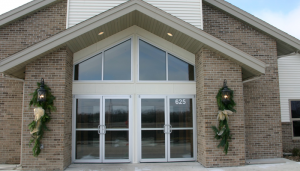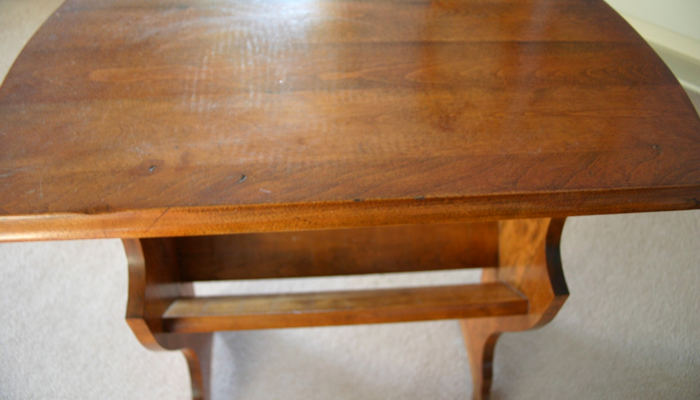Hiram and I really enjoyed listening to one of Terri Gross’s interviews on Fresh Air a few months ago. Her guest was Barbara Strauch, the health and medical science editor at The New York Times and author of the new book, The Secret Life of the Grown-Up Brain.
We liked the interview because Strauch listed several ways middle-aged brains function better than teen brains. Now that we’re merrily tripping through our fifties, we appreciate hearing how we can still outperform our twenty-something children. Take that, you young whippersnappers!
Here are some snippets from the interview transcript.
GROSS: Are there processes that improve in the middle-aged brain?
Ms. STRAUCH: We think we’re sort of the smartest in college or graduate school or whatever, and when they do the tests they find that’s not true in many areas, including reasoning, inductive reasoning – we are better than we were in our 20s. And there’s a whole host of areas where they’re finding that we actually improve in middle age, over our, you know, our 20-something selves, and it’s extremely encouraging. We are better at getting the gist of arguments.
When you’re younger, you may, I mean this is a very simple example but, you may be better at remembering a list of fruit: bananas, oranges, whatever, grapes. But when you’re older, as you get older, you’re better at recognizing categories. Oh, those are all fruit. Or oh, those are all vegetables. And we’re much better at sizing up situations. They find that we’re better at things like making financial decisions. It reaches a peak in our 60s. Social expertise, in other words, judging whether someone’s a crook or not a crook, also improves and peaks in middle age….
GROSS: And you mentioned that there’s, you know, a, I guess a physiological explanation for it. It’s called bilaterization, that middle-aged people are better able to use two sides of their brain instead of one when thinking through a problem. Would you explain?
Ms. STRAUCH: When you’re younger you use one side of your brain to learn something and another side of the brain to recall it. And as you age, they watched people use both sides of their brain for both tasks. And originally, they thought uh-oh, this must mean bad things. It must mean that there’s some deficit somewhere, and these people, they’re really trying to figure it out. And there was some concern because people with Alzheimer’s will use sometimes more parts of their brain to try to do simple tasks that they could use with one part of their brain before.
But what they’re finding is, the people who use as they age, two parts of their brain rather than one to do a task that they used to be able to do with one, are really the people who are functioning the best in terms of cognitive function….
If it is something that calls for our frontal cortex to do the tasks that we want to do, then you’ll see, as you age, people calling on two parts. We have two sides to our brain – right and left – and if they call on two parts of their frontal cortex to do a task, they can usually perform it better. If it’s something that they usually don’t need their frontal cortex for, you’ll find that people who are really cognitively better than others will go in and reach for that frontal cortex to help them do whatever they need to do.
And they think that basically, the people who are used to reaching up and getting some of that high-power brain juice, really, they find correlations with education. The higher-educated people are better at doing that. They find people who maybe have more efficient brains, through genetics or whatever, are better at doing that. And what they’re trying now to do, actually, is teach people to use two parts of their brain to call on their frontal cortex more. And that’s why you get all these efforts to try to push the brain – as you get older – to try and make it work really hard.
And what they’re trying to do is get you to use more of your brain and keep using more of your brain, so that your brain doesn’t get into a rut and go fallow, or call on that frontal cortex more so those pathways are clear and you have it there when you need it….
GROSS: In your book you mention that exercise and oxygen can be helpful for memory.
Ms. STRAUCH: Yes. If there’s a star in aging brain research, it is probably exercise. The best data is with exercise and across the board they find that if the brain needs anything, it is very much like the heart and it needs blood. It needs to circulate – the blood needs to be circulated. It needs oxygen. And so when they do the studies, from rats to humans, about vigorous exercise, they find that it improves cognitive function across the board. And they’re finding now, as they look inside brains, it creates new baby brain cells. Something they didn’t…
GROSS: Exercise?
Ms. STRAUCH: Yes. Something they didn’t think happened in the grown-up brain at all. So you get better. You get bigger brain volume if you exercise, and it seems to last. So there’s no question that, sadly, exercise works in terms of keeping your brain in better shape. So that one is studied probably the best out of all the things you can do.
GROSS: When we say exercise, what are we talking about? Does it have to be like lifting heavy weights and, you know, doing all the machine stuff in the gym? Are we talking about walking every day? What are we talking about?
Ms. STRAUCH: Well, some of the studies – Art Kramer, University of Illinois, has found that people who simply walked around a track three times a week, you know, at a certain pace were better off than others. Walking, anything aerobic is considered quite good. You can’t – it’s probably best not to sort of take a stroll, but actually get your heart pumping. That’s really what you want. Just as you were thinking about what do I need to do for my heart, think about the fact that you should do that also for your brain.
To learn more, go to this link at www.npr.org. You’ll find a related article, the entire transcript, or downloadable audio version are available. And strut your stuff by sending the link to your kids, too. They need to know how smart we are, don’t you think?








